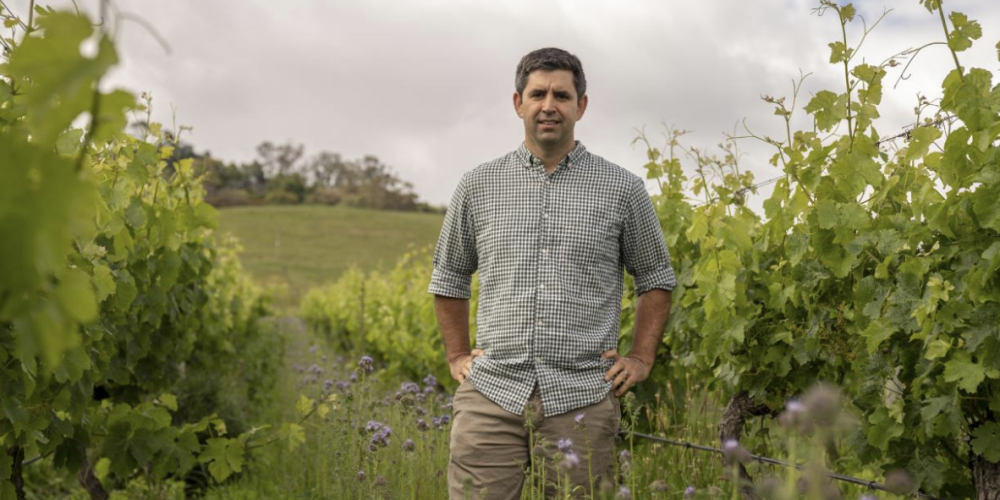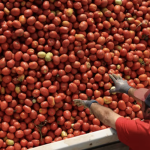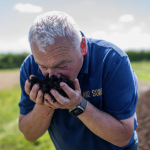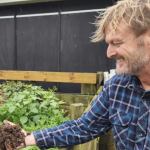Te Mata Estate rolls out new agro-ecological production system after four year trial, with excellent results
Added 2 years ago
By Bonnie Flaws

A series of trials over four years on different Te Mata Estate blocks has resulted in the roll out of a new agro-ecological production system across all vineyards, the backbone of which is organics.
Chief viticulturist Brenton Riley says the new approach is producing incredible fruit quality, and greater resilience in the vines.
“Four years ago we had a bit of a sit down and said, look we’re an intergenerational family and we want to be able to do what we do in another hundred years. And if not the same, then even better. We have a lot of vineyards in the Havelock Hills, and we have been here for over 100 years. The oldest vineyard was planted in 1892.
“But some of those soils have been quite depleted and we really wanted to start building and returning back to the land. We also wanted to make this a culture journey for our team. We have 11 staff in total in the vineyard. It was important that the team buy into this.”
Setting up the trials
At the beginning of this process, the team brainstormed various ideas. There wasn’t just one model however, that would be suitable for all the estate’s properties. Soils varied from clay loams to the Gimblett Gravels, to loam soils in Bridge Pa and Dartmoor, and climates varied too.
Trials were set up on each block and each variety. To begin with they were organic, following BioGro protocols, but they also experimented with biodynamics using the Demeter system, learnings from the regenerative viticulture movement and even conventional farming practices.
“What we ended up coming up with is, that all these programmes have their shortcomings and merits and so we decided on a mixed model approach,” Brenton says.
The goal was to achieve healthy soils and vine resilience, as well as the securing of the estate for a centuries to come.
“So we have leant against all of these production systems, with the overarching one being the BioGro organics. We are not going to go for organic certification at the moment, however. But we are running an organic programme and we are also taking aspects of regenerative, such as cover cropping. We’re not using fertilisers anymore, we only use compost as our main input. We also use crimp rolling to terminate our cover crops.”
Cover crops
Cover crops are planted in the middle of the vine rows, with the aim of building biomass and soil carbon. The crimp roller is a piece of kit with special blades that crimps the crop into a kind of thatch as it rolls over the top. This thatch then conserves moisture levels because there is no bare earth, but it also allows microbes to penetrate the soil and pulls carbon down rather allowing it to escape into the atmosphere.
Brenton says the cover crops they use are different depending now hat outcome they’re looking for. In the case of low fertility soils, cereals like triticale and black oats are used because they are the two main cover crops used for building biomass. However, if the soil is low on nitrogen, they add in things like tick beans, blue lupins, mustard and peas. If a block has medium vigour and access to lots of water, crops like plantain are used.
“They are fantastic for drawing out moisture in the early part of the season, and then get accessed by those vines. We like moisture in the early part of the season, and water stress by fruit set. It regulates the berry size and increase the colour and the tannin and the overall quality of the grape.”
Pest control and soil treatment
Another new practice is to plant wildflowers every tenth row, as the estate has moved away from herbicides and insecticides. Species like buckwheat, alyssum and phacelia are used because they have been proven to the the highest glucose level of any flowers available in New Zealand commercially. These highly aromatic flowers attract all the beneficial insects into the vineyard and control things like mealy bug and leaf roller.
Finally, they have included biodynamic preparations in their system. In particular they settled on Prep 500 and CPP. With one of their blocks backing onto Weleda, the pre-eminent experts in biodynamics, they’ve been able to access a lot of knowledge.
Brenton says the CPP is applied as a soil drench in the spring time and the Prep 500 is applied post-harvest in the autumn to inoculate the soils with biology. The manure for these preparations is taken from three miniature Scottish highland cows that the estate purchased.
Biodynamics is famous for fermenting cow manure inside of a cow horn that is buried for a period of time before being taken out and diluted with water, mixing them in a vortex structure, which is said to vitalise the preparation.
Beautiful grapes
Fusing all these approaches to create something that works for Te Mata Estate has been a great experiment, Brenton says, but one that has produced excellent results.
“We finished up those trials and this season is the one we rolled it across everything - we found the recipe that we wanted. We don’t use any herbicides or insecticides anymore, our spraying programme is completely organic. Pretty much all our inputs are organic. The sum of all parts is greater than the whole, as the saying goes. All the things we do along the growing season contribute to something really fantastic.”
But the point of all this is to create great wines long into the future. So how is all this hard work affecting the grapes themselves? Te Mata Estate is already renewed for producing the country’s best wine, Coleraine, which has set records as New Zealand’s most expensive collectors wine. Te Mata’s other famous wines include the Bullnose Syrah and Cape Crest Sauvignon Blanc. Can it really get any better?
“The quality that we are picking at the moment is just fantastic. And even though we had a hard year with the late season rain and cyclone, we had a really good outcome. This year too. Everything is just looking so clean, very concentrated fruit, lush canopies and a beautiful balance of growth and vine stress that has lead to some really lovely fruit. We are really looking forward to getting it into the winery and making beautiful wine out of it.”
Join the conversation
Phyllis Tichinin - Apr 3, 2024, 9:00 AM
Congratulations to Brenton and the Te Mata family on aiming towards the future and taking regenerative actions in the present. Well done. I have a suggestion for their cover crops given the wide diversity of soil types they deal with... identify the soil problem or lack you want to rectify with the cover crop and then choose a variety of warm season vs cold season, high carbon vs high nitrogen, deep rooted vs shallow rooted crops for a specialised melange of plants that synergistically deal with those particular issues, keeping in mind that the more species you can add, even in tiny seed amounts, you will compound the beneficial results. Don't keep it simple... embrace diversity every way you can. There are lots of cover crop selection guides out there on line. UC Davis did a good one about 12 years ago.
Leave a comment
All comments are reviewed before they are published on the website. Your email address will not be published.



Regenerative Agriculture Helping Kaukapakapa Farmer Cut Costs and Restore Soil



